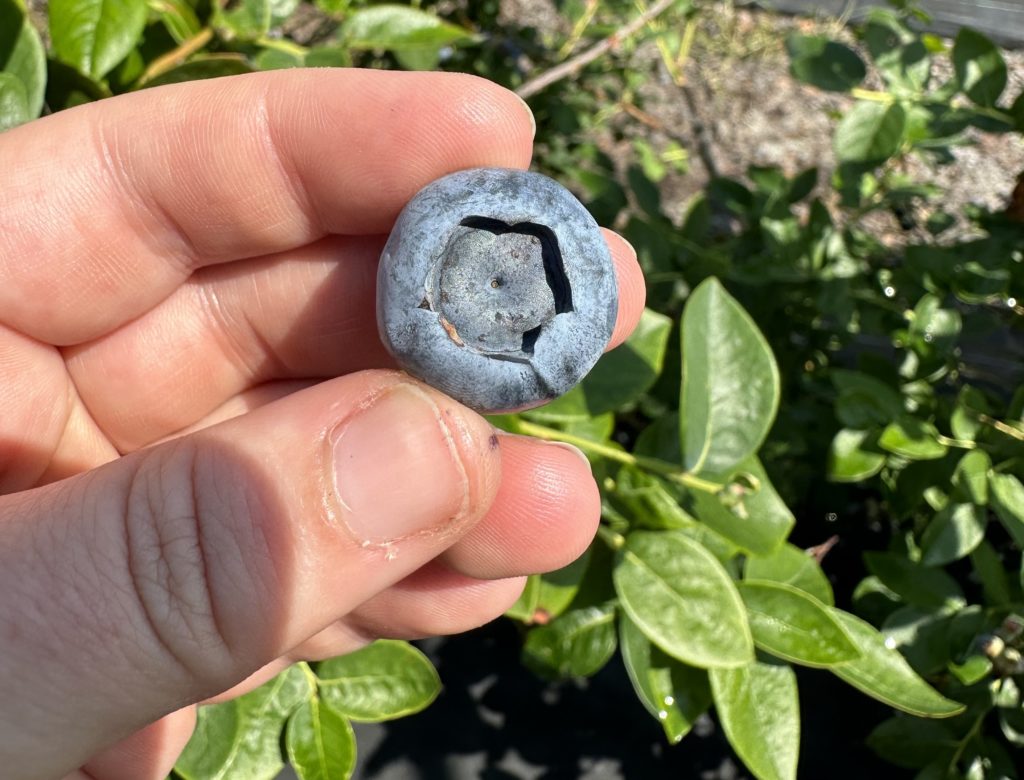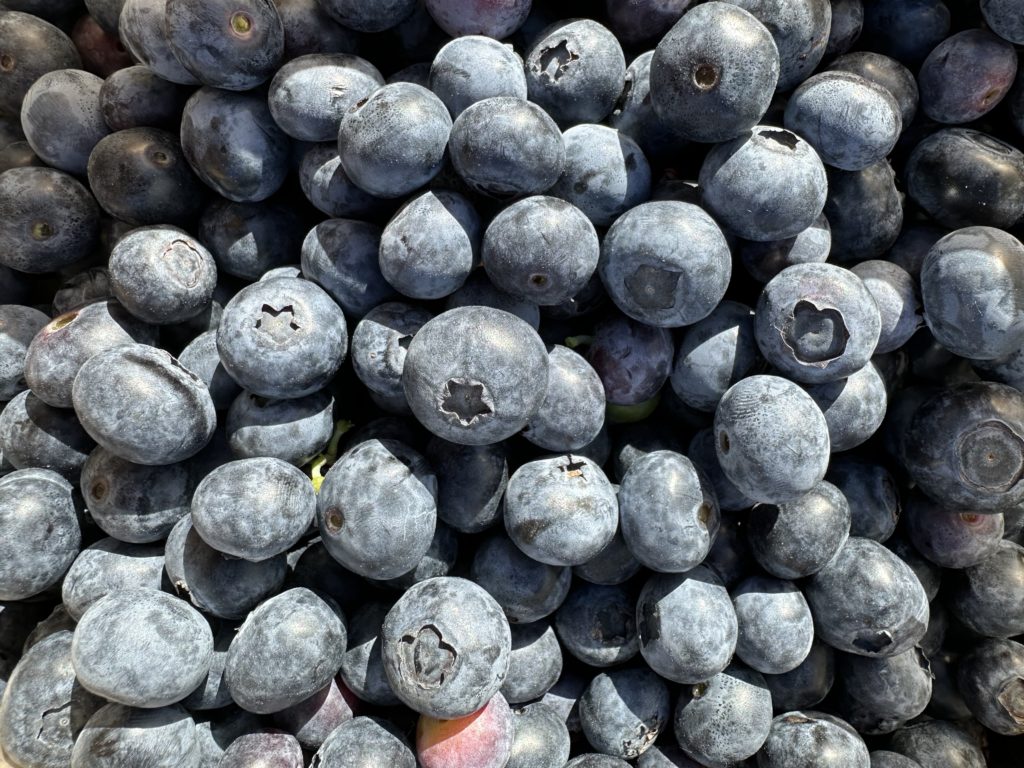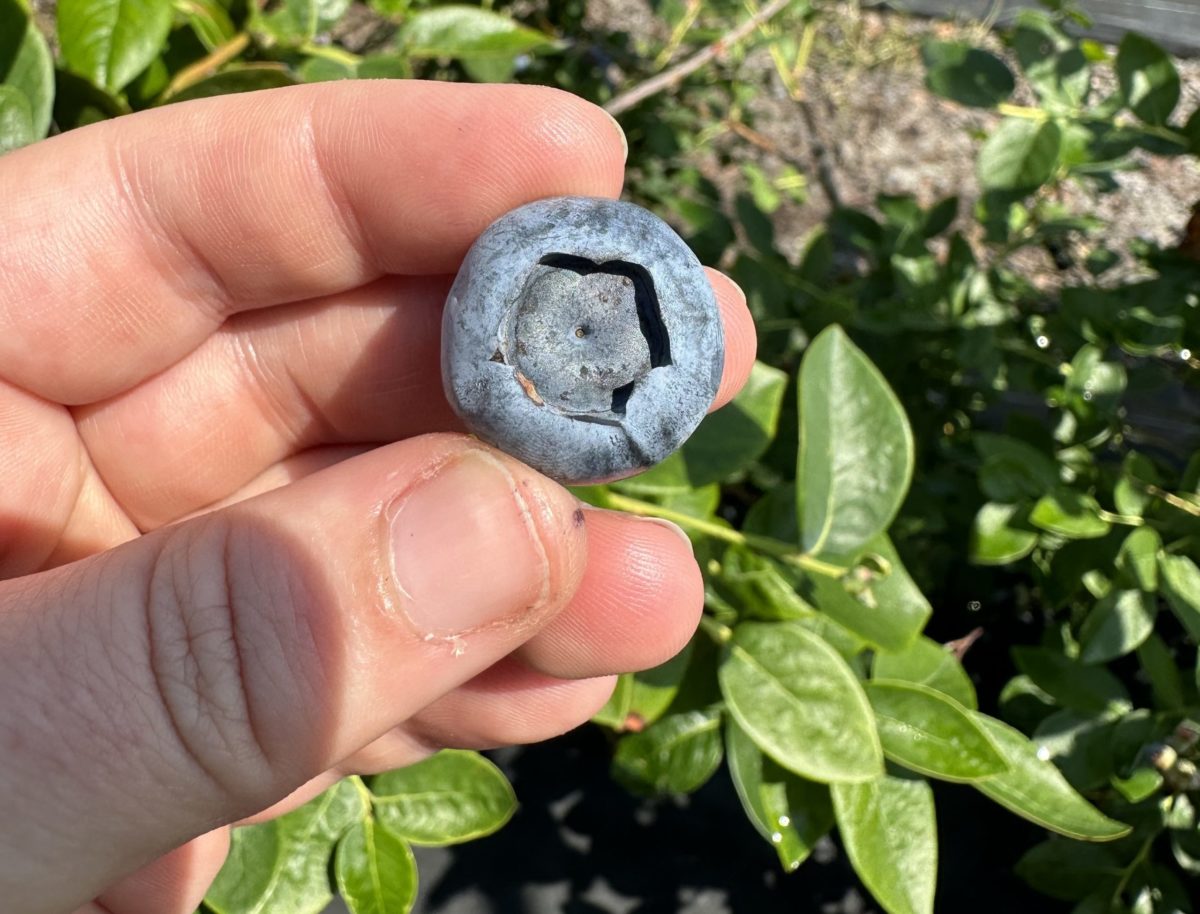By Gerardo H. Nunez
Long gone are the days when blueberries were a seasonal product. Nowadays, blueberries are available at the grocery store year-round thanks to innovations in plant breeding and a flood of imported fruit. This is changing the scenario for blueberry growers in the Southeast. Suddenly, growing fruit for the early spring market is not enough. The market demands quality. This article summarizes current knowledge and ongoing research efforts aimed at helping growers produce blueberries that delight consumers.

Photo by L. Goldsby
DEFINING HIGH QUALITY
In taste panels, a group of consumers are asked to taste blueberries and describe their experience. This method has been used since the 2010s to try to answer the question of what defines high quality. Three factors appear to influence the liking of blueberries: flavor intensity, sweetness and texture.
Consumers want a blueberry that tastes like a blueberry. They describe the ideal blueberry as one that is sweet, has bold and intense blueberry flavor and is not mealy, mushy or gritty. However, not all consumers are the same. Some consumers are very driven by flavor while others are more interested in health-promoting benefits. For some consumers, blueberry quality is all about fruity flavors; for others, it is all about antioxidants.
FLAVOR FACTORS
Everybody knows what a blueberry tastes like, but defining blueberry flavor has taken nearly a decade of research. Our brains combine two information streams to process flavor: taste and aroma. Taste is mediated by sensory organs in our tongue (taste buds) that send information to our brain about five categories: sweet, sour, salty, bitter and umami. In the case of blueberries, only sweet and sour tastes are involved. Consumers want blueberries that score highly on the sweetness scale and low on the sourness scale. We all know about varieties that never get sweet. Those are certainly not enjoyed by consumers.

Photo by L. Goldsby
Sweetness is related to soluble sugars in the fruit. Soluble sugars accumulate during fruit ripening. If you have ever tasted a green blueberry (I do not encourage it. They are bad!), you know that there is very little sugar there. The longer the fruit stays on the plant, the more sugar it accumulates.
Temperature can affect sweetness. Warm days and cool nights promote sugar accumulation. Warm nights decrease sugar accumulation. This is why early fruit is so sweet. Early in the spring, fruits ripen slowly at a time when days are warm, and nights are cool. It should be no surprise that fruit sweetness declines later in the season.
The other part of flavor is aroma. Aroma — also known as olfaction or smell — is mediated by receptors in the nasal cavity that detect the presence of volatile organic molecules (VOCs). VOCs are small molecules that are released when we chew our food. There are many kinds of VOCs. Some, for example, give blueberries floral, citrusy and fruity notes. Consumers prefer blueberry fruits that have these aromas. On the other hand, some VOCs can give blueberries herbal, green or minty notes. These aromas make for worse fruit. The genes involved in desirable VOCs synthesis have been identified. This information will certainly make for new, flavorful blueberry varieties soon.
FIRMNESS FAVORED
Nobody likes to open a clamshell and find soft or mushy berries. Panels confirmed that consumers prefer crispy blueberries that pop in their mouth. Blueberry firmness is related to anatomical features of the berry. For example, the number of cell layers in the fruit skin contributes to blueberry firmness, but the number of stone cells does not. Even the attributes of cells in the berry affect firmness.
Cell walls are made of long carbohydrates cross-linked by calcium. Calcium content in the fruit is related to firmness. Growers have recognized this relationship for a while now, and many practices have been adopted to promote calcium accumulation in the fruit. The jury is still out about how much calcium can be delivered to the fruit from foliar applications. So, at this time, calcium applications at root level appear to be the best option.
A unique aspect of blueberry firmness is that it is desirable for growers and consumers. Fruit firmness declines as the fruit ripens. So, the longer fruits sit on the plant, the softer they become. Sweeter but softer is the tradeoff of blueberry fruit quality.
Fruit softening spells trouble for mechanical harvest. Softer fruits get damaged or bruised in mechanical harvesters and sorters. Also, when soft fruits are mechanically harvested, they are more likely to develop postharvest diseases. Thus, firm fruits are ideal for mechanical harvest. New varieties and farming methods will be necessary to make sure growers can deliver firm fruits that delight consumers while dealing with scarce and expensive labor.
As the blueberry business becomes increasingly competitive, it is time to broaden our focus. Crop timing will always be important, but now more than ever before, we should be thinking about the quality of berries we are producing. My colleagues and I at the University of Florida Institute of Food and Agricultural Sciences (UF/IFAS) look forward to helping the industry make this transition.
Gerardo H. Nunez is a UF/IFAS assistant professor in Gainesville.










